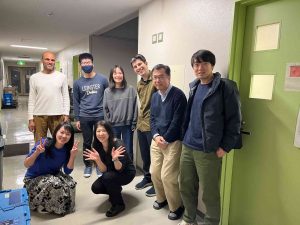IRTG Travel Grants Programme
PhD researcher Alexander Mchedlishvili joined the 14th Symposium on Polar Science and the Hokkaido University in Japan for a research exchange
With support from the (AC)³ IRTG Travel Grant, I was able to go to Japan for a conference and brief research stay, giving me an opportunity to take a glimpse into a completely different scientific environment while I was there.
My time in Japan was divided between attending the The 14th Symposium on Polar Science and a brief research stay at the Institute of Low Temperature Science, Hokkaido University. The former was a great chance to meet experts in Polar sciences that were previously unknown to me. The sessions I attended dealt with sea ice, atmosphere and ocean physics as well as glaciology. I met researchers from the National Institute of Polar Research, the Japan Aerospace Exploration Agency (JAXA) as well as universities across Tokyo that dealt with sea ice. Discussions with them gave me further insight in my own project, especially after having given my talk on my pan-Arctic drag coefficient estimate retrieval. With this presentation, I believe I also gave (AC)³ more visibility in Japan and perhaps opened up possibilities of further collaboration between Germany and Japan in the future.
The latter part of my time in Japan consisted of a research stay at Hokkaido University. There, I was welcomed by my host, Dr. Takenobu Toyota, who is a sea ice remote sensing expert. I had the pleasure of exchanging details on our respective work as well as discussing potential collaborations in the future. In addition, I got to meet others in the group, including Master’s students eager to learn more about Polar science and continue their scientific careers. Overall, Dr. Toyota managed to make my stay there very pleasant despite it being a very short research stay. I especially enjoyed the tour of the Institute of Low Temperature Science where I got to see their cold rooms that are used for ice core section microscopy, as well sea ice experiments in tubs that can induce motion in the water to replicate rough water sea ice formation. Lastly, I had the pleasure of presenting at their weekly seminar during which time I introduced to the group there my work as well as NASA’s ICESat-2 laser altimeter satellite and its applications.
A list of all funded travel grants can be found on the IRTG page here.

